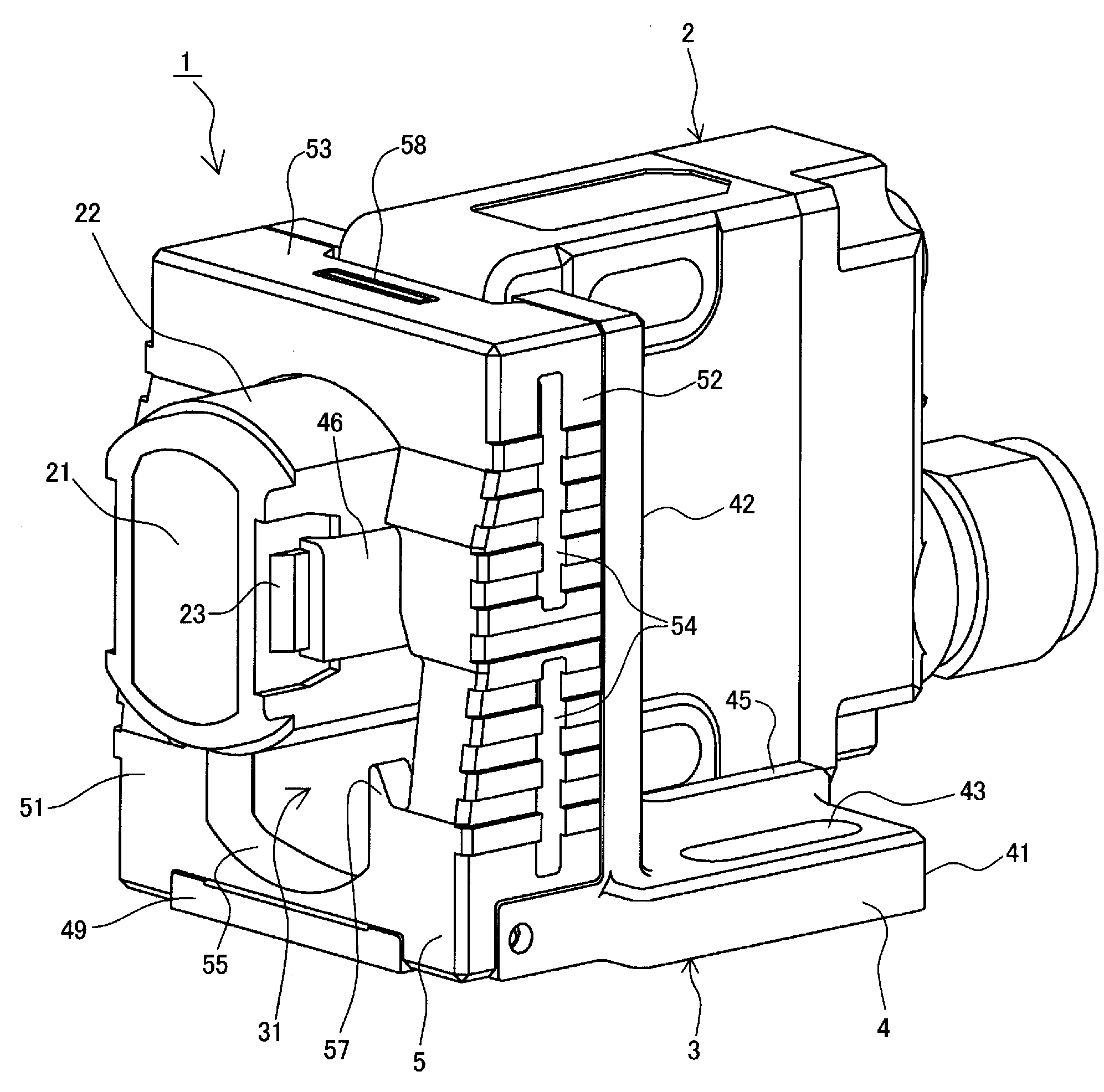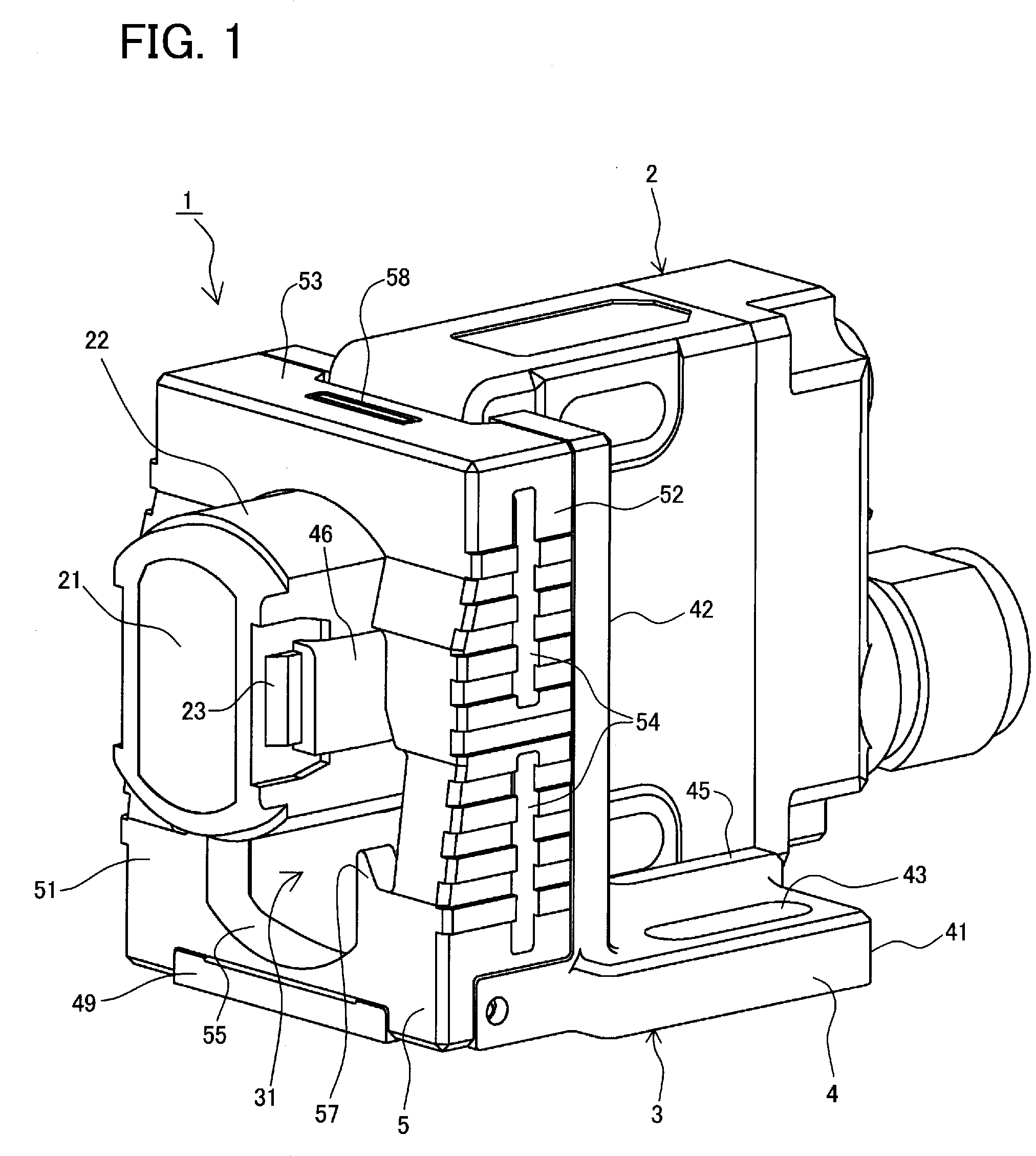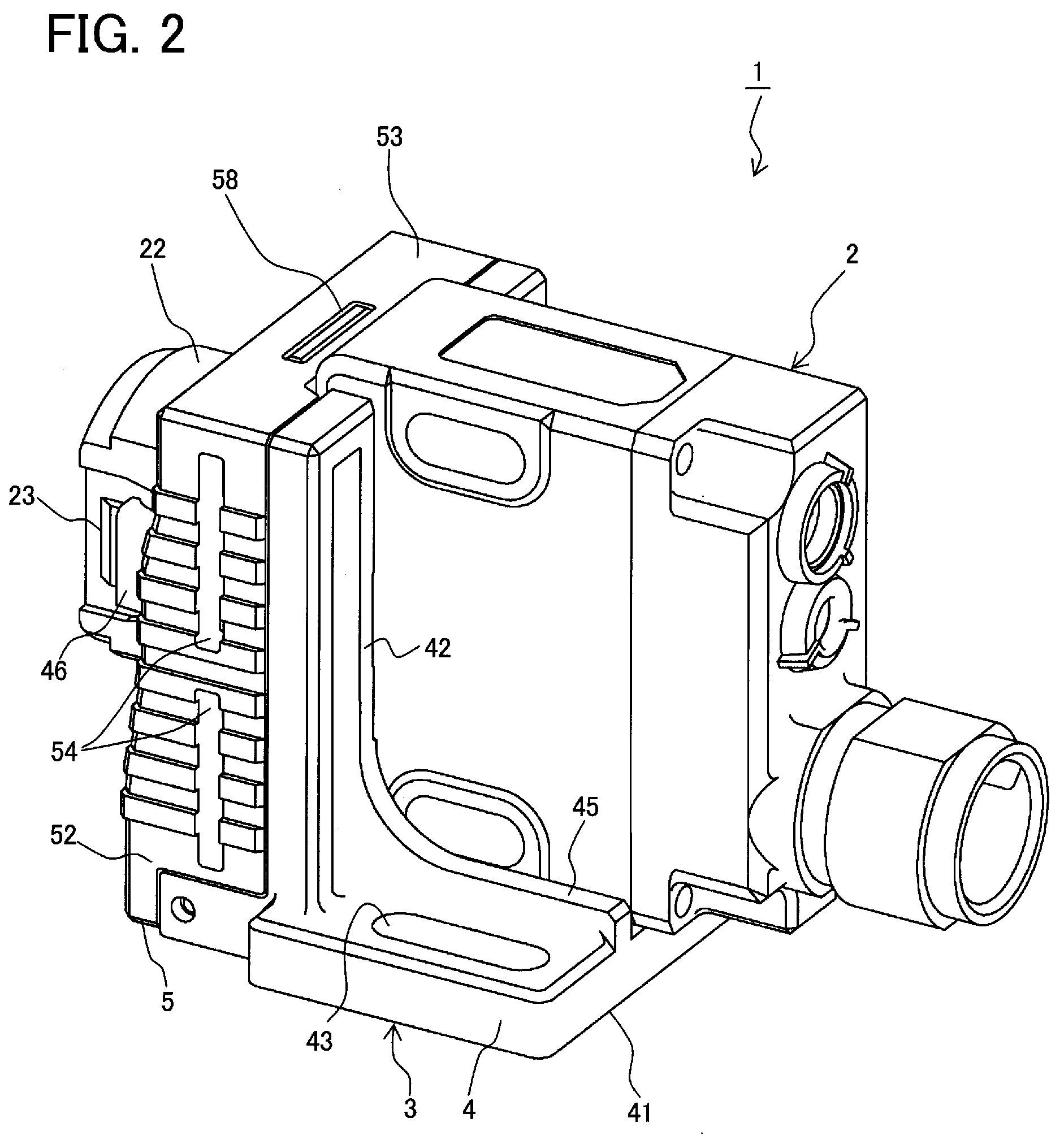Sensor Attachment Device, A Sensor and A Light Emitting Device For A Photo-Electrical Sensor
- Summary
- Abstract
- Description
- Claims
- Application Information
AI Technical Summary
Benefits of technology
Problems solved by technology
Method used
Image
Examples
Embodiment Construction
[0035]The present invention will now be described in detail with reference to preferred embodiment and the drawings.
[0036]FIG. 1 is a front perspective view illustrating one example of a photo-electrical sensor 1 according to an embodiment of the present invention. FIG. 2 is a rear perspective view illustrating the photo-electrical sensor 1 of FIG. 1. FIG. 3 is a front elevational view illustrating the photo-electrical sensor 1 of FIG. 1. FIG. 4 is a cross-sectional view taken along a line A-A shown in FIG. 3. FIG. 5 is a front exploded perspective view illustrating the photo-electrical sensor 1 of FIG. 1. FIG. 6 is a rear exploded perspective view the photo-electrical sensor 1 of FIG. 1. FIGS. 7A to 7C illustrate a configuration of a holding member 4, respectively showing a plan view, a front elevational view, and a side elevational view of the holding member 4. FIGS. 8A to 8D illustrate a configuration of an operation member 5, respectively showing a plan view, a front elevational...
PUM
 Login to View More
Login to View More Abstract
Description
Claims
Application Information
 Login to View More
Login to View More - R&D
- Intellectual Property
- Life Sciences
- Materials
- Tech Scout
- Unparalleled Data Quality
- Higher Quality Content
- 60% Fewer Hallucinations
Browse by: Latest US Patents, China's latest patents, Technical Efficacy Thesaurus, Application Domain, Technology Topic, Popular Technical Reports.
© 2025 PatSnap. All rights reserved.Legal|Privacy policy|Modern Slavery Act Transparency Statement|Sitemap|About US| Contact US: help@patsnap.com



